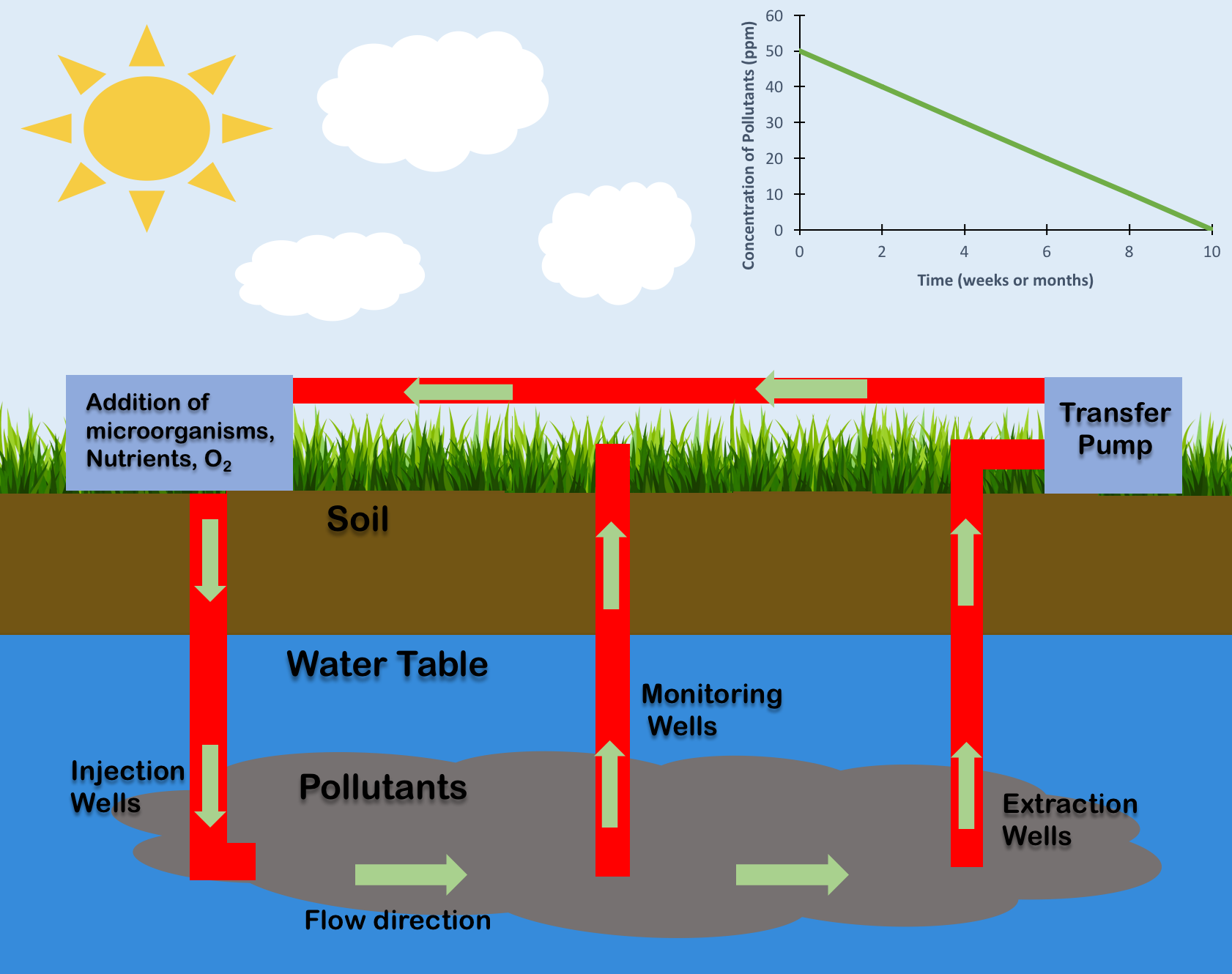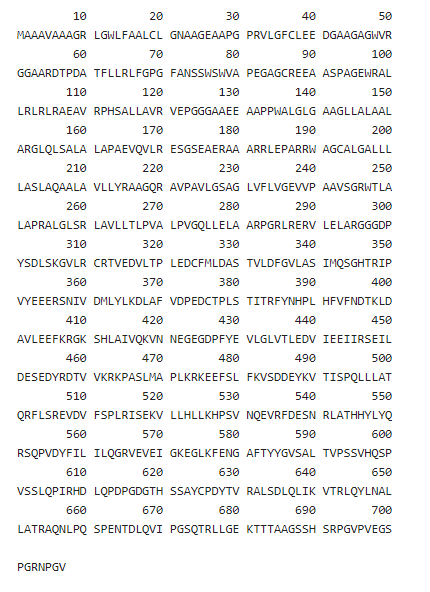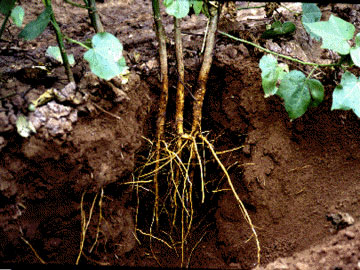|
Hyperaccumulators
A hyperaccumulator is a plant capable of growing in soil or water with high concentrations of metals, absorbing them through their roots, and concentrating extremely high levels of metals in their tissues. The metals are concentrated at levels that are toxic to closely related species not adapted to growing on the metalliferous soils. Compared to non-hyperaccumulating species, hyperaccumulator roots extract the metal from the soil at a higher rate, transfer it more quickly to their shoots, and store large amounts in leaves and roots. The ability to hyperaccumulate toxic metals compared to related species has been shown to be due to differential gene expression and regulation of the same genes in both plants. Hyperaccumulating plants are of interest for their ability to extract metals from the soils of contaminated sites (phytoremediation) to return the ecosystem to a less toxic state. The plants also hold potential to be used to mine metals from soils with very high concentrations ... [...More Info...] [...Related Items...] OR: [Wikipedia] [Google] [Baidu] |
Phytoremediation Plants
Phytoremediation technologies use living plants to clean up soil, air and water contaminated with hazardous contaminants. It is defined as "the use of green plants and the associated microorganisms, along with proper soil amendments and agronomic techniques to either contain, remove or render toxic environmental contaminants harmless". The term is an amalgam of the Greek ''phyto'' (plant) and Latin ''remedium'' (restoring balance). Although attractive for its cost, phytoremediation has not been demonstrated to redress any significant environmental challenge to the extent that contaminated space has been reclaimed. Phytoremediation is proposed as a cost-effective plant-based approach of environmental remediation that takes advantage of the ability of plants to concentrate elements and compounds from the environment and to detoxify various compounds without causing additional pollution. The concentrating effect results from the ability of certain plants called hyperaccumulators t ... [...More Info...] [...Related Items...] OR: [Wikipedia] [Google] [Baidu] |
Metallophyte
A metallophyte is a plant that can tolerate high levels of heavy metals such as lead. Such plants range between "obligate metallophytes" (which can only survive in the presence of these metals), and "facultative metallophytes" which can tolerate such conditions but are not confined to them. European examples include alpine pennycress (''Thlaspi caerulescens''), the zinc violet ('' Viola calaminaria''), spring sandwort ('' Minuartia verna''), sea thrift (''Armeria maritima''), ''Cochlearia'', common bent (''Agrostis capillaris''), Dover catchfly ('' Silene paradoxa'') and plantain (''Plantago lanceolata''). Few metallophytes are known from Latin America. Metallophytes commonly exist as specialised flora found on spoil heaps of mines. Such plants have potential for use in phytoremediation of contaminated ground. See also *Hyperaccumulator *List of hyperaccumulators This article covers known hyperaccumulators, accumulators or species tolerant to the following: Aluminium (Al), Sil ... [...More Info...] [...Related Items...] OR: [Wikipedia] [Google] [Baidu] |
Phytomining
Phytomining, sometimes called agromining, is the concept of extracting heavy metals from the soil using plants. Specifically, phytomining is for the purpose of economic gain. The approach exploits the existence of hyperaccumulators, proteins or compounds secreted by plants to bind certain metal ions. These extracted ores are called bio-ores. A 2021 review concluded that the commercial viability of phytomining was "limited" because it is a slow and inefficient process. History Phytomining was first proposed in 1983 by Rufus Chaney, a USDA agronomist. He and Alan Baker, a University of Melbourne professor, first tested it in 1996. They, as well as Jay Scott Angle and Yin-Ming Li, filed a patent on the process in 1995 which expired in 2015. Advantages Phytomining would, in principle, cause minimal environmental effects compared to mining. Phytomining could also remove low-grade heavy metals from mine waste. See also * Semisynthesis Semisynthesis, or partial chemical synt ... [...More Info...] [...Related Items...] OR: [Wikipedia] [Google] [Baidu] |
List Of Hyperaccumulators
This article covers known hyperaccumulators, accumulators or species tolerant to the following: Aluminium (Al), Silver (Ag), Arsenic (As), Beryllium (Be), Chromium (Cr), Copper (Cu), Manganese (Mn), Mercury (Hg), Molybdenum (Mo), Naphthalene, Lead (Pb), Selenium (Se) and Zinc (Zn). See also: * Hyperaccumulators table – 2: Nickel * Hyperaccumulators table – 3: Cd, Cs, Co, Pu, Ra, Sr, U, radionuclides, hydrocarbons, organic solvents, etc. Hyperaccumulators table – 1 Cs-137 activity was much smaller in leaves of larch and sycamore maple than of spruce A spruce is a tree of the genus ''Picea'' ( ), a genus of about 40 species of coniferous evergreen trees in the family Pinaceae, found in the northern temperate and boreal ecosystem, boreal (taiga) regions of the Northern hemisphere. ''Picea'' ...: spruce > larch > sycamore maple. References {{DEFAULTSORT:Hyperaccumulators +01 Hyperaccumulators, +01 Pollution control technologies Lists of plants Science-rela ... [...More Info...] [...Related Items...] OR: [Wikipedia] [Google] [Baidu] |
Pleiotropy
Pleiotropy () is a condition in which a single gene or genetic variant influences multiple phenotypic traits. A gene that has such multiple effects is referred to as a ''pleiotropic gene''. Mutations in pleiotropic genes can impact several traits simultaneously, often because the gene product is used in various cell (biology), cells and affects different biological targets through shared signaling pathways. Pleiotropy can result from several distinct but potentially overlapping mechanisms, including gene pleiotropy, developmental biology, developmental pleiotropy, and selectional pleiotropy. Gene pleiotropy occurs when a gene product interacts with multiple proteins or catalyzes different reactions. Developmental pleiotropy refers to mutations that produce several phenotype, phenotypic effects during development. Selectional pleiotropy occurs when a single phenotype influences evolutionary fitness (biology), fitness in multiple ways (depending on factors such as age and sex). T ... [...More Info...] [...Related Items...] OR: [Wikipedia] [Google] [Baidu] |
Bioremediation
Bioremediation broadly refers to any process wherein a biological system (typically bacteria, microalgae, fungi in mycoremediation, and plants in phytoremediation), living or dead, is employed for removing environmental pollutants from air, water, soil, fuel gasses, industrial effluents etc., in natural or artificial settings. The natural ability of organisms to adsorb, accumulate, and degrade common and emerging pollutants has attracted the use of biological resources in treatment of contaminated environment. In comparison to conventional physicochemical treatment methods bioremediation may offer advantages as it aims to be sustainable, eco-friendly, cheap, and scalable. This technology is rarely implemented however because it is slow or inefficient. Most bioremediation is inadvertent, involving native organisms. Research on bioremediation is heavily focused on stimulating the process by inoculation of a polluted site with organisms or supplying nutrients to promote their growt ... [...More Info...] [...Related Items...] OR: [Wikipedia] [Google] [Baidu] |
Metal Transporter CNNM3
Metal transporter CNNM3 (also known as cyclin M3 or Ancient conserved domain-containing protein 3) is a human transmembrane protein which is made up of 707 amino acids. Although CNNM3 is ubiquitous, it is mostly present in the kidney, brain, lung, spleen, heart and liver. When was discovered, CNNM3 protein was called cyclin M3 because of the similarity on its sequence with the cyclin family. However, it belongs to CNNMs transmembrane family, together with CNNM1, CNNM2 and CNNM4. The main function of CNNM3, along with the other CNNM proteins, is to regulate Mg2+ levels in the cell and maintain its homeostasis. Moreover, it is codified by the gene CNNM3 or ACDP3. Structure Regarding the structure, CNNMs contain an N-terminal extracellular domain, a transmembrane domain called DUF21, a large cytosolic region that includes a pair of cystathionine-β-synthase domains, known as CBS-pair, and, furthermore, a putative cyclic nucleotide-binding homology domain, which name is CNBH (''Cyc ... [...More Info...] [...Related Items...] OR: [Wikipedia] [Google] [Baidu] |
Root
In vascular plants, the roots are the plant organ, organs of a plant that are modified to provide anchorage for the plant and take in water and nutrients into the plant body, which allows plants to grow taller and faster. They are most often below the surface of the soil, but roots can also be aerial root, aerial or aerating, that is, growing up above the ground or especially above water. Function The major functions of roots are absorption of water, plant nutrition and anchoring of the plant body to the ground. Types of Roots (major rooting system) Plants exhibit two main root system types: ''taproot'' and ''fibrous'', with variations like adventitious, aerial, and buttress roots, each serving specific functions. Taproot System Characterized by a single, main root growing vertically downward, with smaller lateral roots branching off. Examples. Dandelions, carrots, and many dicot plants. Fibrous RootSystem Consists of a network of thin, branching roots that spread out from ... [...More Info...] [...Related Items...] OR: [Wikipedia] [Google] [Baidu] |
Antiherbivory
Plant defense against herbivory or host-plant resistance is a range of adaptations Evolution, evolved by plants which improve their fitness (biology), survival and reproduction by reducing the impact of herbivores. Many plants produce secondary metabolites, known as Heterotelergones, allelochemicals, that influence the behavior, growth, or survival of herbivores. These chemical defenses can act as repellents or toxins to herbivores or reduce plant digestibility. Another defensive strategy of plants is changing their attractiveness. Plant perception (physiology), Plants can sense being touched, and they can respond with strategies to defend against herbivores. Plants alter their appearance by changing their size or quality in a way that prevents overconsumption by large herbivores, reducing the rate at which they are consumed. Other defensive strategies used by plants include escaping or avoiding herbivores at any time in any placefor example, by growing in a location where plants ... [...More Info...] [...Related Items...] OR: [Wikipedia] [Google] [Baidu] |




